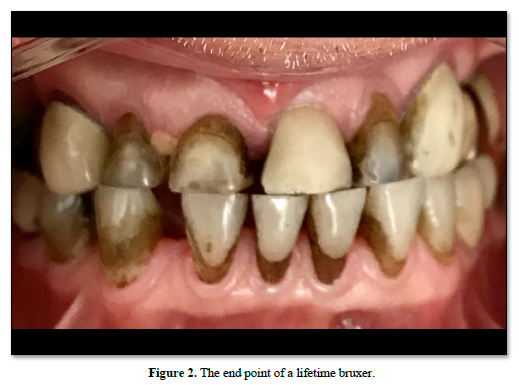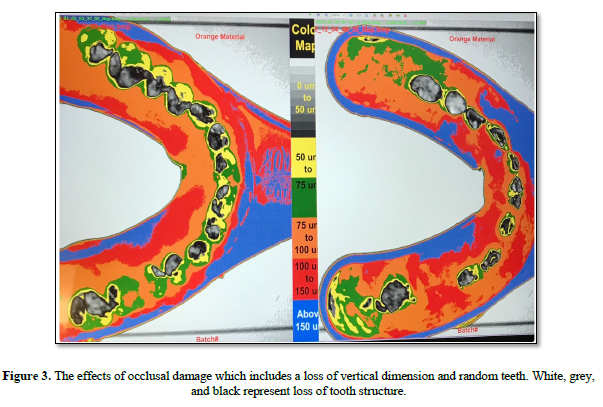-
Publish Your Research/Review Articles in our High Quality Journal for just USD $99*+Taxes( *T&C Apply)
Offer Ends On
Philip L Millstein*, Carlos Eduardo Sabrosa and Wai Yung
Corresponding Author: Philip L Millstein, Department of Restorative Dentistry, Harvard School of Dental Medicine, Boston, Massachusetts, USA.
Received: November 01, 2025 ; Revised: November 05, 2025 ; Accepted: November 07, 2025 ; Available Online: November 07, 2025
Citation: Millstein PL, Sabrosa CE & Yung W. (2025) Occlusal Damage and Bruxism: Early Intervention is Needed. J Oral Health Dent Res, 5(2): 1-3.
Copyrights: ©2025 Millstein PL, Sabrosa CE & Yung W. This is an open-access article distributed under the terms of the Creative Commons Attribution License, which permits unrestricted use, distribution, and reproduction in any medium, provided the original author and source are credited.
Views & Citations
Likes & Shares
This paper describes a means to view incipient bruxism before extreme occlusal damage occurs. Occlusal contacts, intensity of contact and wear patterns dynamic and static are examined.
Keywords: Bruxism, Occlusal Damage, Occlusal Contact Intensity, Wear patterns
Bruxism is a disease (1). People with Bruxism are often unaware that they grind. It causes a misalignment of the jaws so that wear, tear and the ultimate destruction of the dentition results. A large part of the malfunctioning articulation is of neurological origin. The end result is dental destruction (Figs 1,2,3.) Upon routine dental examination mild grinding of the dentition is ignored. It is difficult to diagnose but if it was easily identified then early preventive treatment to allay further occlusal destruction could be implemented. An occlusal scan system has been developed which provides a dentist early viewing of beginning disarticulation. It is basically a simple procedure. Take a triple tray impression of the occlusion using a non-set silicone gum. The silicone gum responds easily to the force of a bite by adapting its shape around the tooth surfaces in the time required to close and grind but when removed the only forces acting on it are gravity and surface tension which is low. This enables us to quickly image the impression without a loss of accuracy. The patient moves their mandible in a closed position and grinds in all directions. The total impression procedure takes one minute. The triple tray is removed with the impression of the bite intact. The bite is immediately processed using a specially made occlusal scan which includes a light box positioned 6 inches from an overhead camera which is connected to an image producing means for recording and interpreting various thicknesses of impression material and providing the results numerically and or in assigned colors that relate to the numbers. Two hundred fifty-six pixels is the baseline and the color is white. A reduction in compressed pixels with associated colors represent near and far areas from occlusal contact. The black profiles on the occlusal surfaces represent the grinding parameters. Black and grey areas are under 50 microns in thickness. They are derived from the grinding areas as they continue to enlarge. Grinding shortens teeth and often reduces the vertical dimension resulting in an alteration in facial posture and facial profile. The more the grinding the greater the surface loss and the stronger the masticatory muscles. Bruxism is an iterative pathology that cannot be repaired but it can be monitored and future damage minimized. Monitoring black and gray profiles and comparing them over time provides a means to measure change. We cannot reduce the neurological impulses but we can alter their trajectories with the use of removable bite appliances. Developing new types of appliances to reduce damage from grinding remains a challenge.



No Files Found
Share Your Publication :